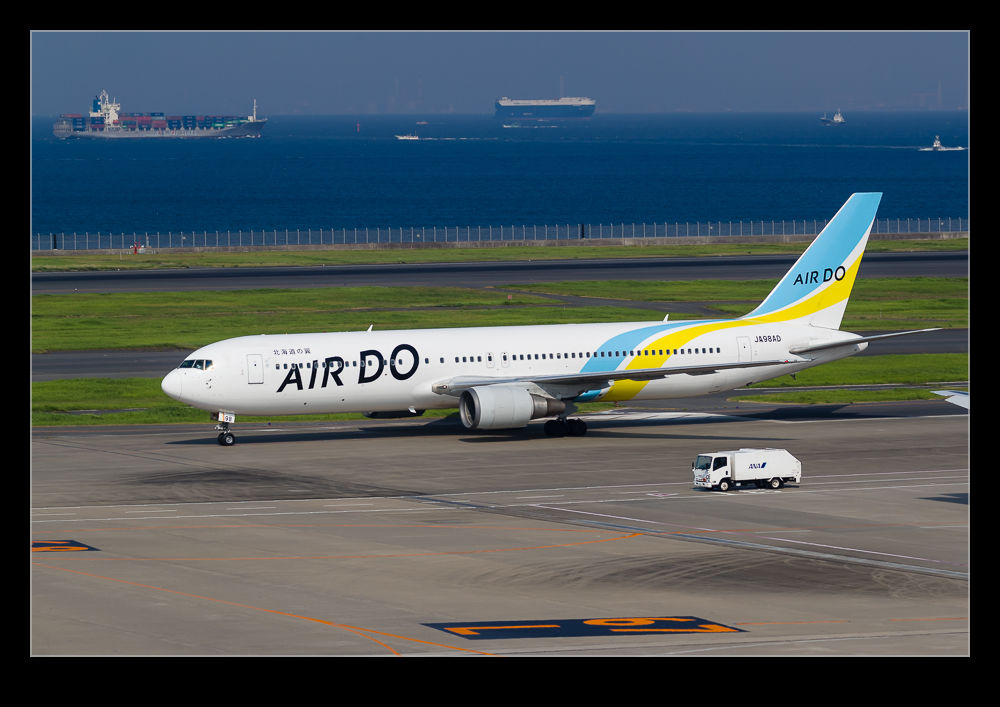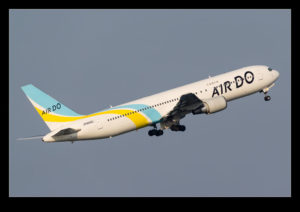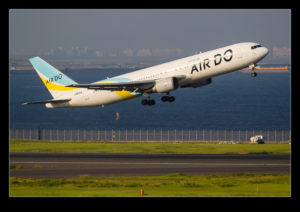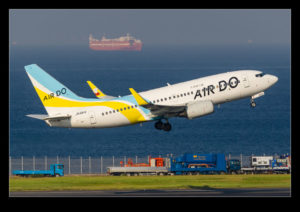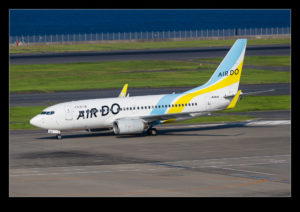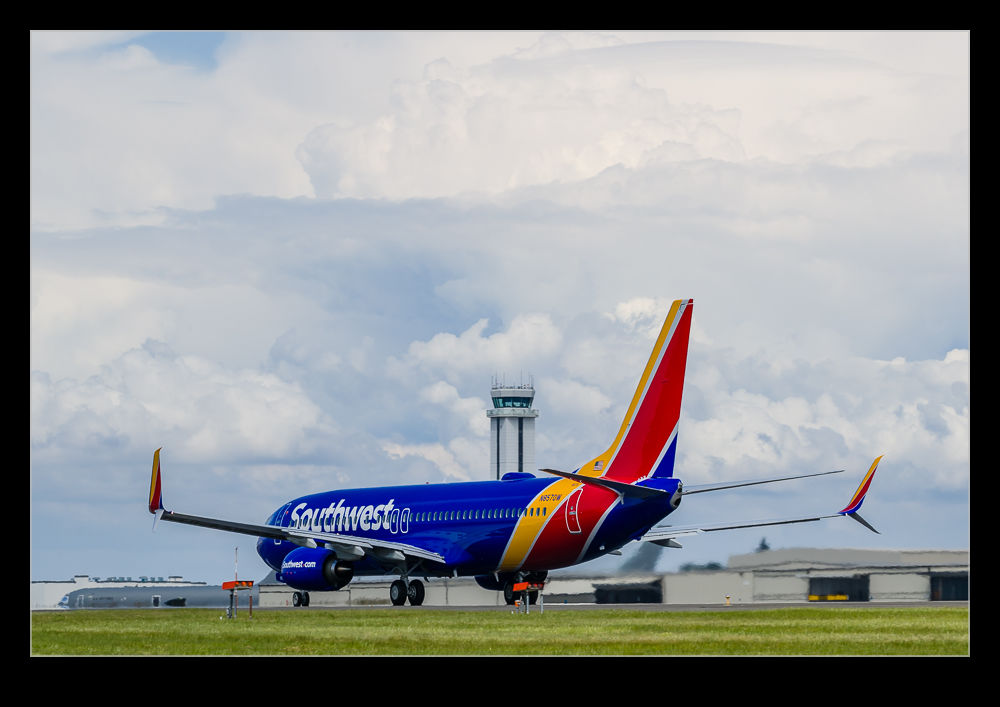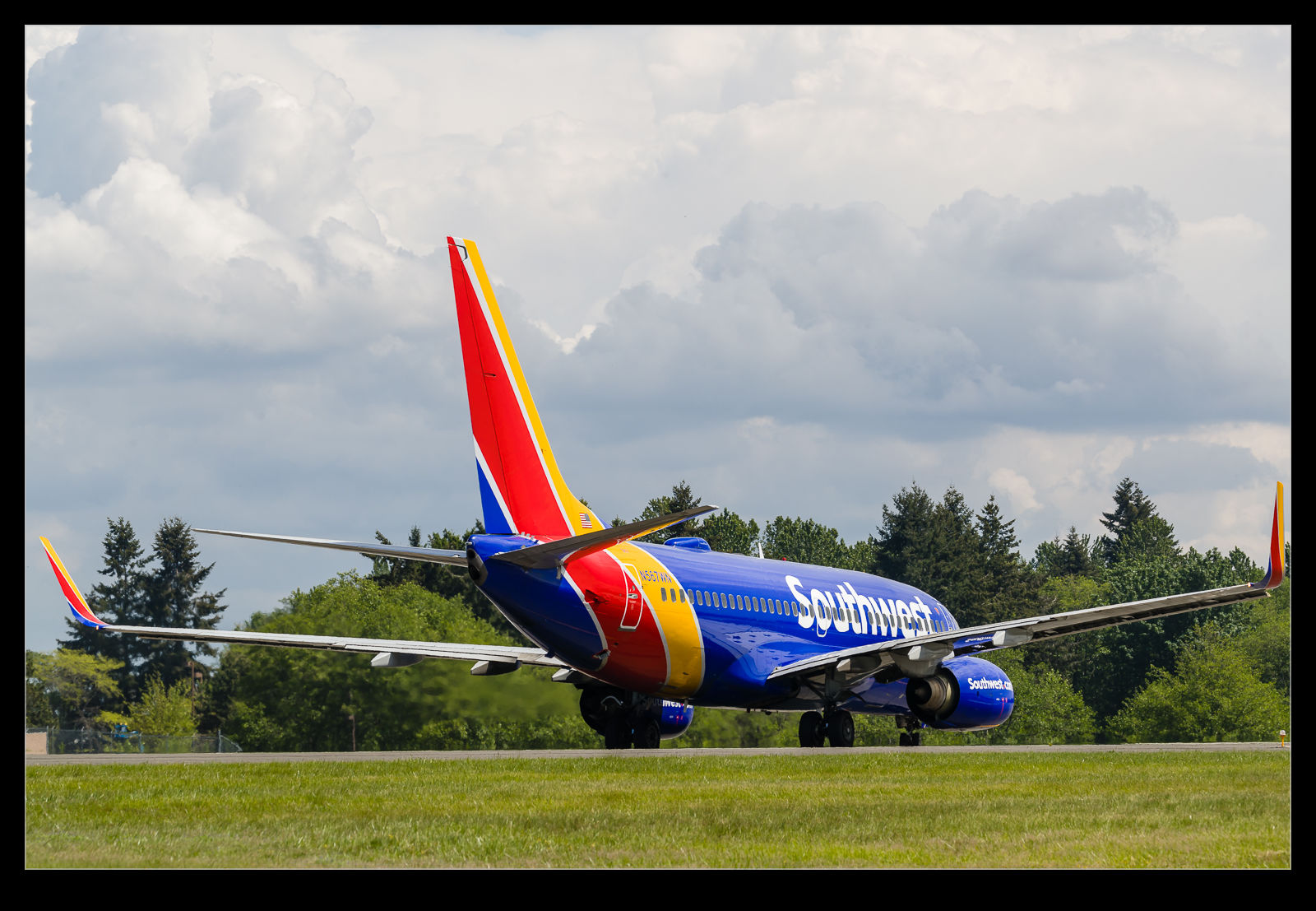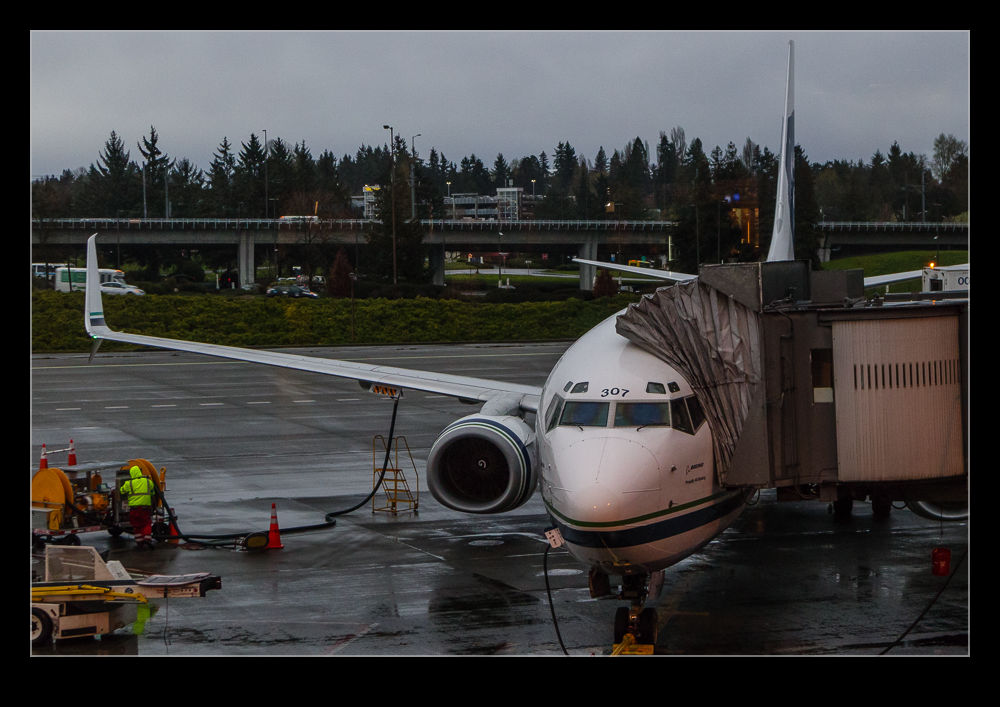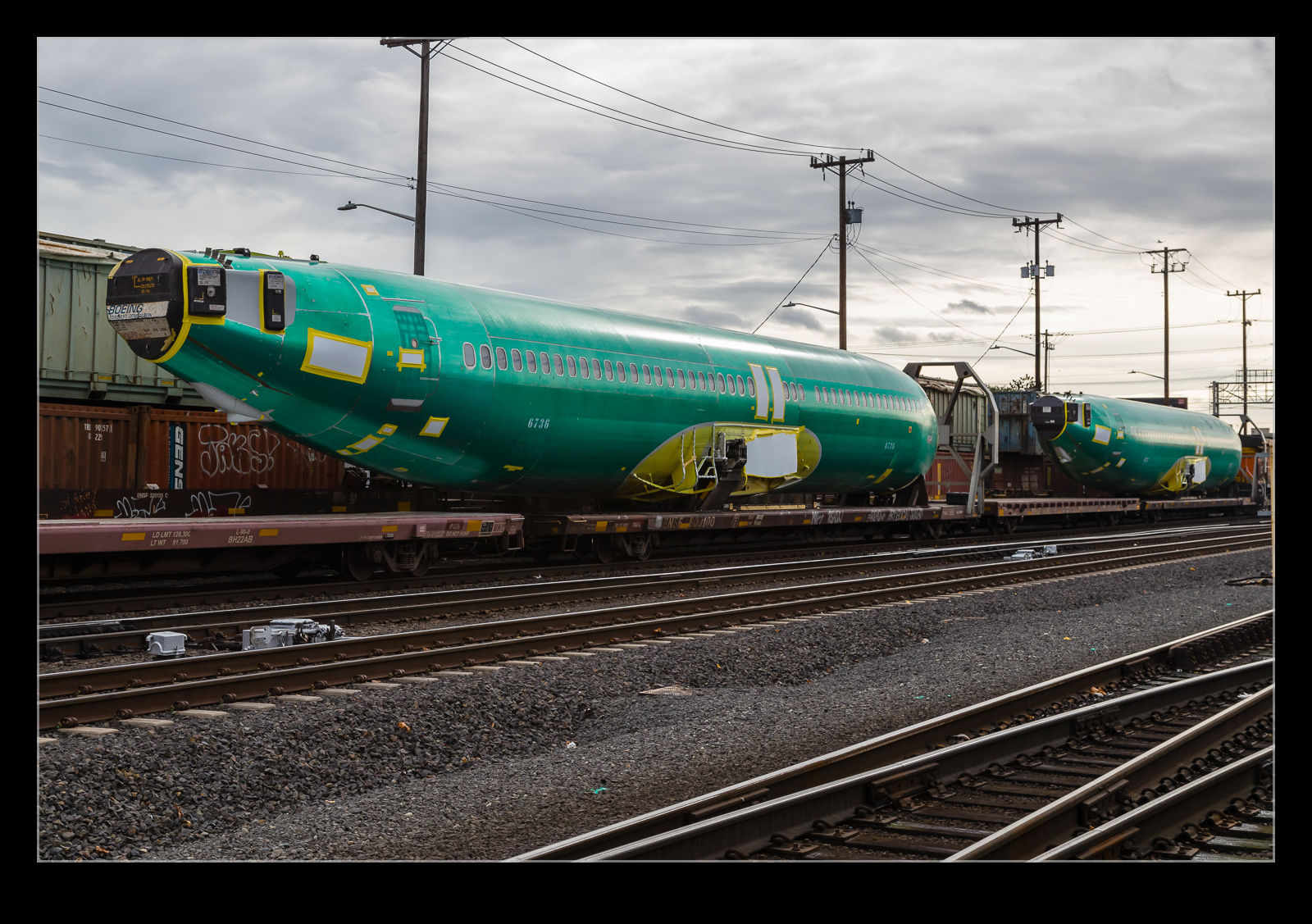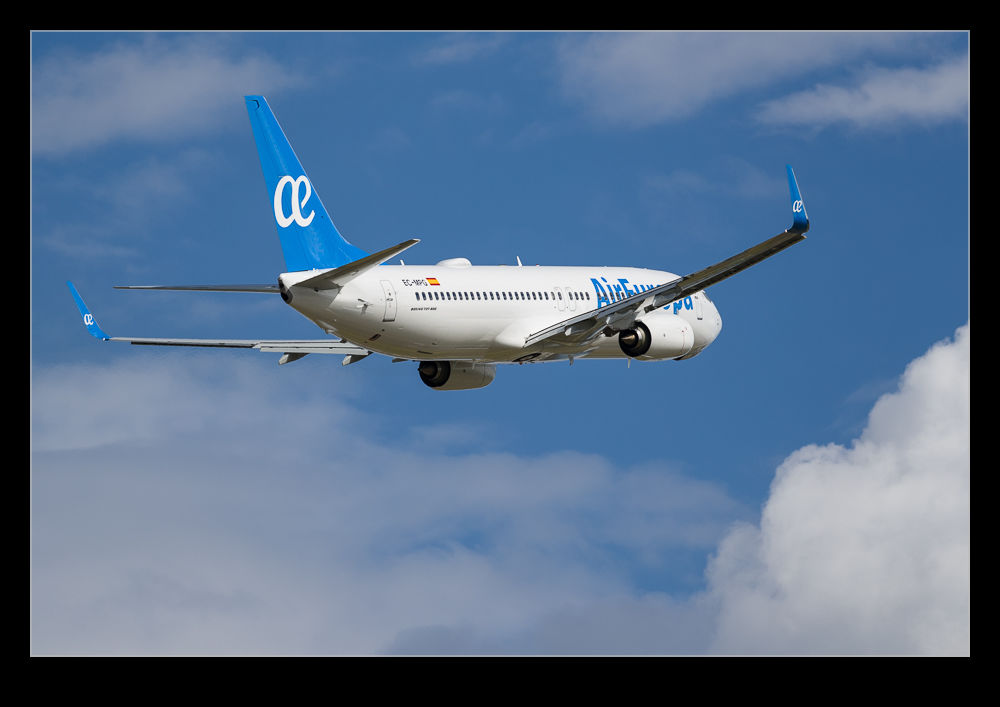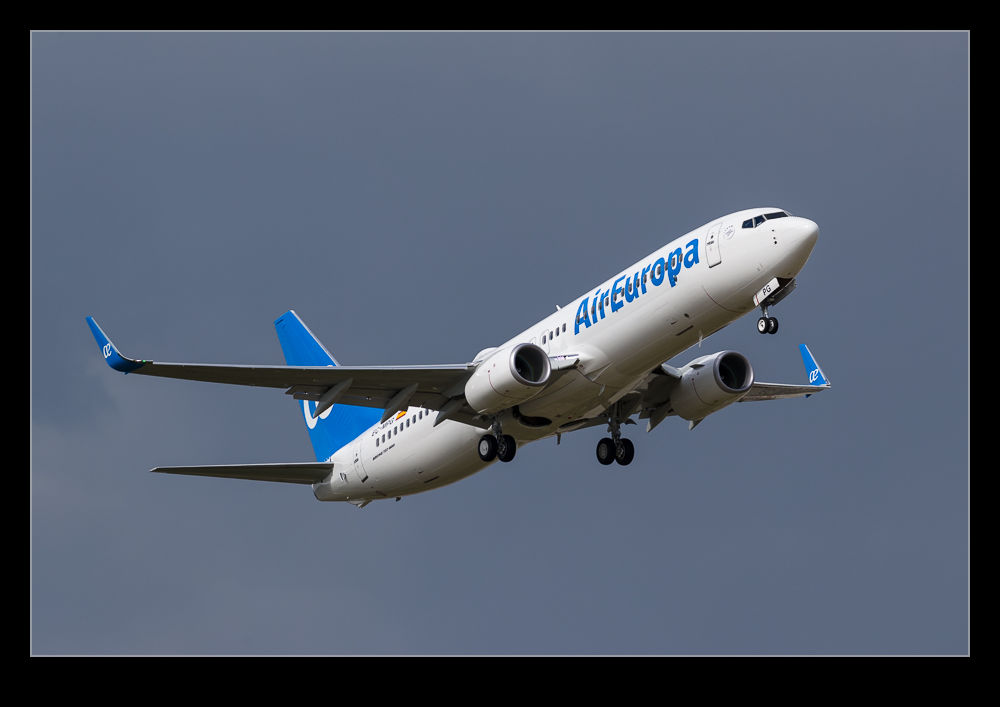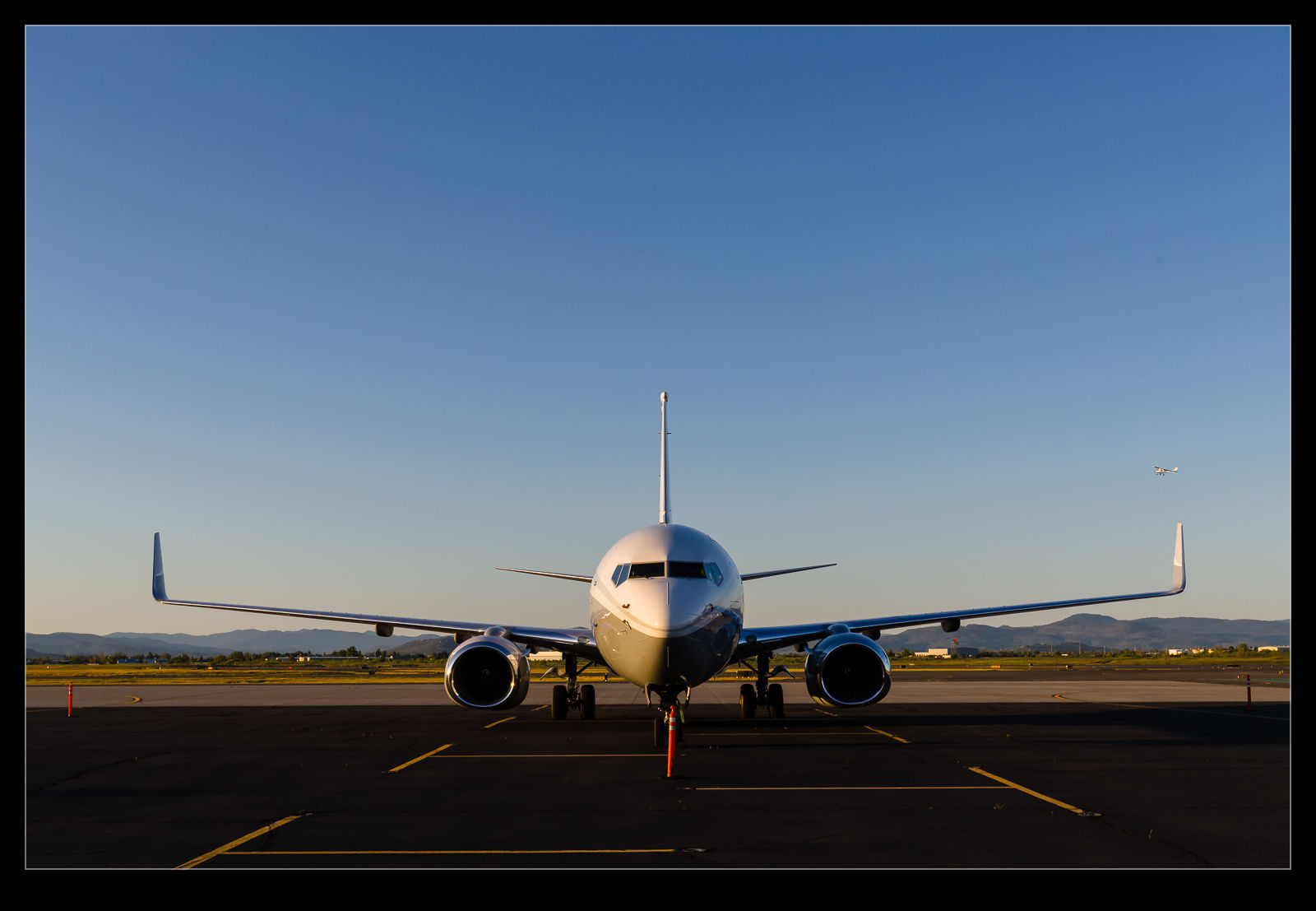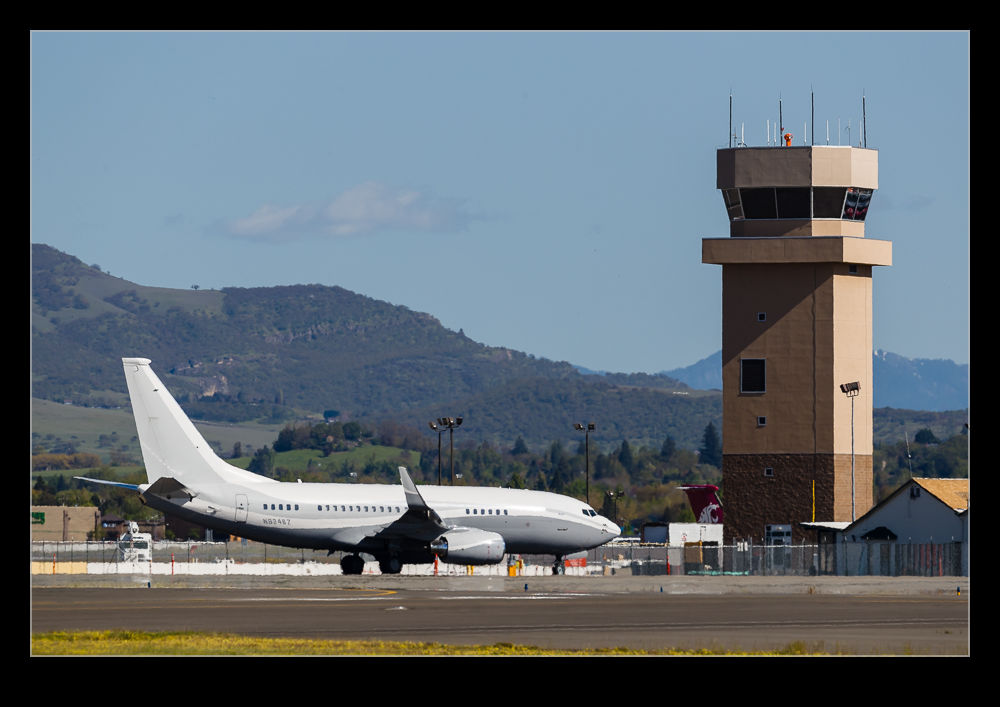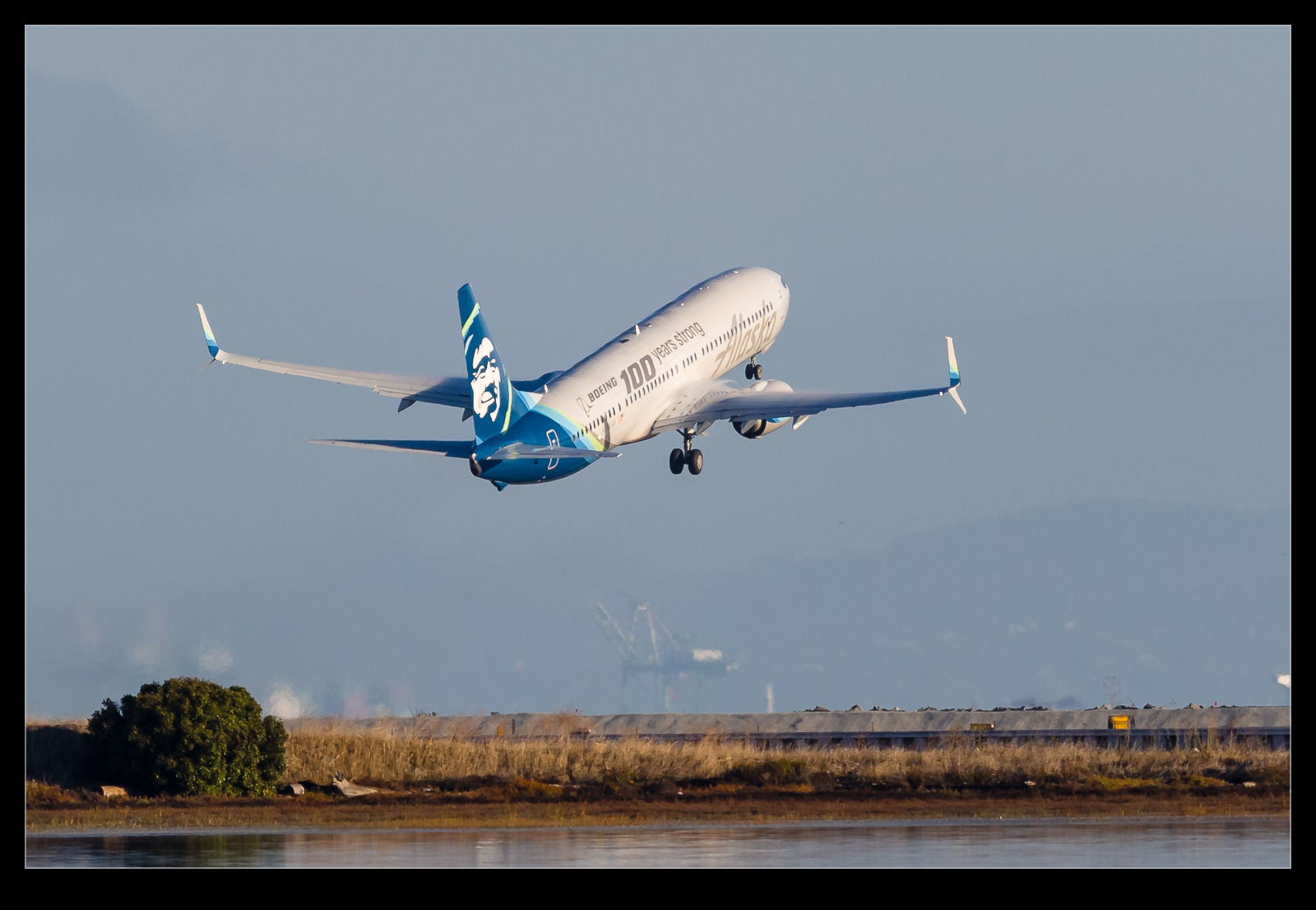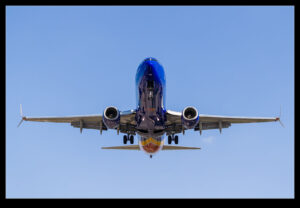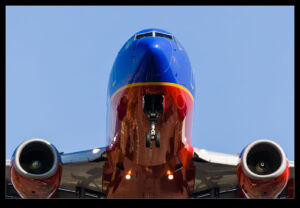 Haneda introduced me to a new airline. Air Do. They had a lot of traffic coming through Haneda, both narrowbody and widebody. In fact, one of their 767s took off in great light as I was walking to the viewing terrace which was a touch frustrating. It was a long time before another one took off but at least the evening light improved so the wait was worthwhile. Meanwhile, the 737s were busy and some 767s taxied past after landing so I got to see a few of them in action.
Haneda introduced me to a new airline. Air Do. They had a lot of traffic coming through Haneda, both narrowbody and widebody. In fact, one of their 767s took off in great light as I was walking to the viewing terrace which was a touch frustrating. It was a long time before another one took off but at least the evening light improved so the wait was worthwhile. Meanwhile, the 737s were busy and some 767s taxied past after landing so I got to see a few of them in action.
Tag Archives: 737
Exodus of Southwest Jets
 The failure of an engine on a Southwest 737 that sadly resulted in the death of a passenger caused a major review of the fleet of 737s. Inspections were identified for the engines in the affected range and everyone was scrambling to find facilities in which to carry out the checks. ATS at Paine Field is one of Southwest’s suppliers and they took in a number of the jets. Towards the end of the fly day that Paine Field was having, three Southwest jets emerged from ATS’s facility. They were towed to the north end of the field.
The failure of an engine on a Southwest 737 that sadly resulted in the death of a passenger caused a major review of the fleet of 737s. Inspections were identified for the engines in the affected range and everyone was scrambling to find facilities in which to carry out the checks. ATS at Paine Field is one of Southwest’s suppliers and they took in a number of the jets. Towards the end of the fly day that Paine Field was having, three Southwest jets emerged from ATS’s facility. They were towed to the north end of the field.
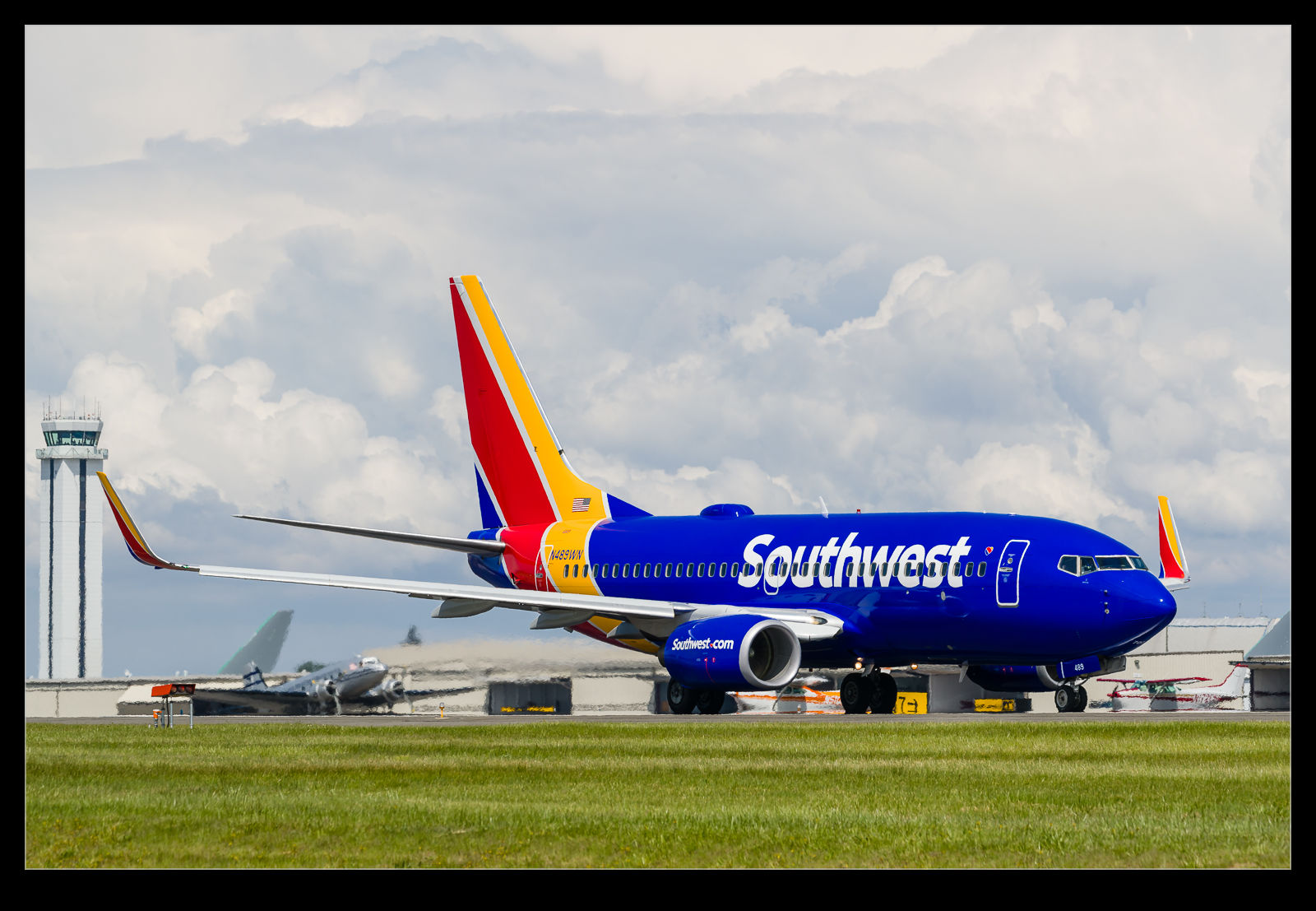 Here they were started up and they took it in turns to taxi down to where we were and then depart. One of the jets was an 800 series and may not have bee affected by the inspection but could have been at ATS for other work. The 700s were quite possibly part of the inspection process. After a day of light traffic and warbirds, the appearance of three Southwest 737s and their subsequent departures made for a change of pace.
Here they were started up and they took it in turns to taxi down to where we were and then depart. One of the jets was an 800 series and may not have bee affected by the inspection but could have been at ATS for other work. The 700s were quite possibly part of the inspection process. After a day of light traffic and warbirds, the appearance of three Southwest 737s and their subsequent departures made for a change of pace.
Eyebrow Windows Still Exist?
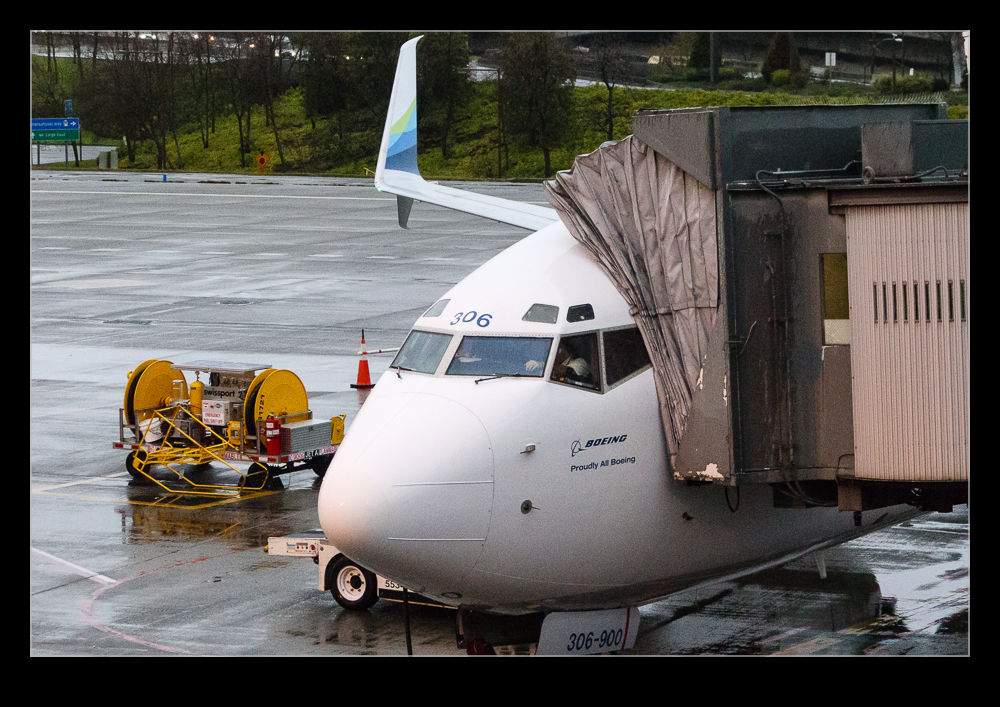 The 737 fuselage is closely tied to the previous generations of Boeing jets like the 707 and 727. It inherited the eyebrow windows above the main cockpit windows. These days, the controlled airspace has made the need for these while maneuvering a lot less. Current jets are built without them and many airlines have reduced maintenance costs by plugging them. I had assumed that they had gone away for most operators. Apparently not for Alaska! Walking through the terminal, I saw one jet with the eyebrows and was surprised. However, then I saw a bunch more so clearly this is still something Alaska see as valuable.
The 737 fuselage is closely tied to the previous generations of Boeing jets like the 707 and 727. It inherited the eyebrow windows above the main cockpit windows. These days, the controlled airspace has made the need for these while maneuvering a lot less. Current jets are built without them and many airlines have reduced maintenance costs by plugging them. I had assumed that they had gone away for most operators. Apparently not for Alaska! Walking through the terminal, I saw one jet with the eyebrows and was surprised. However, then I saw a bunch more so clearly this is still something Alaska see as valuable.
Two More 737s Heading to Renton
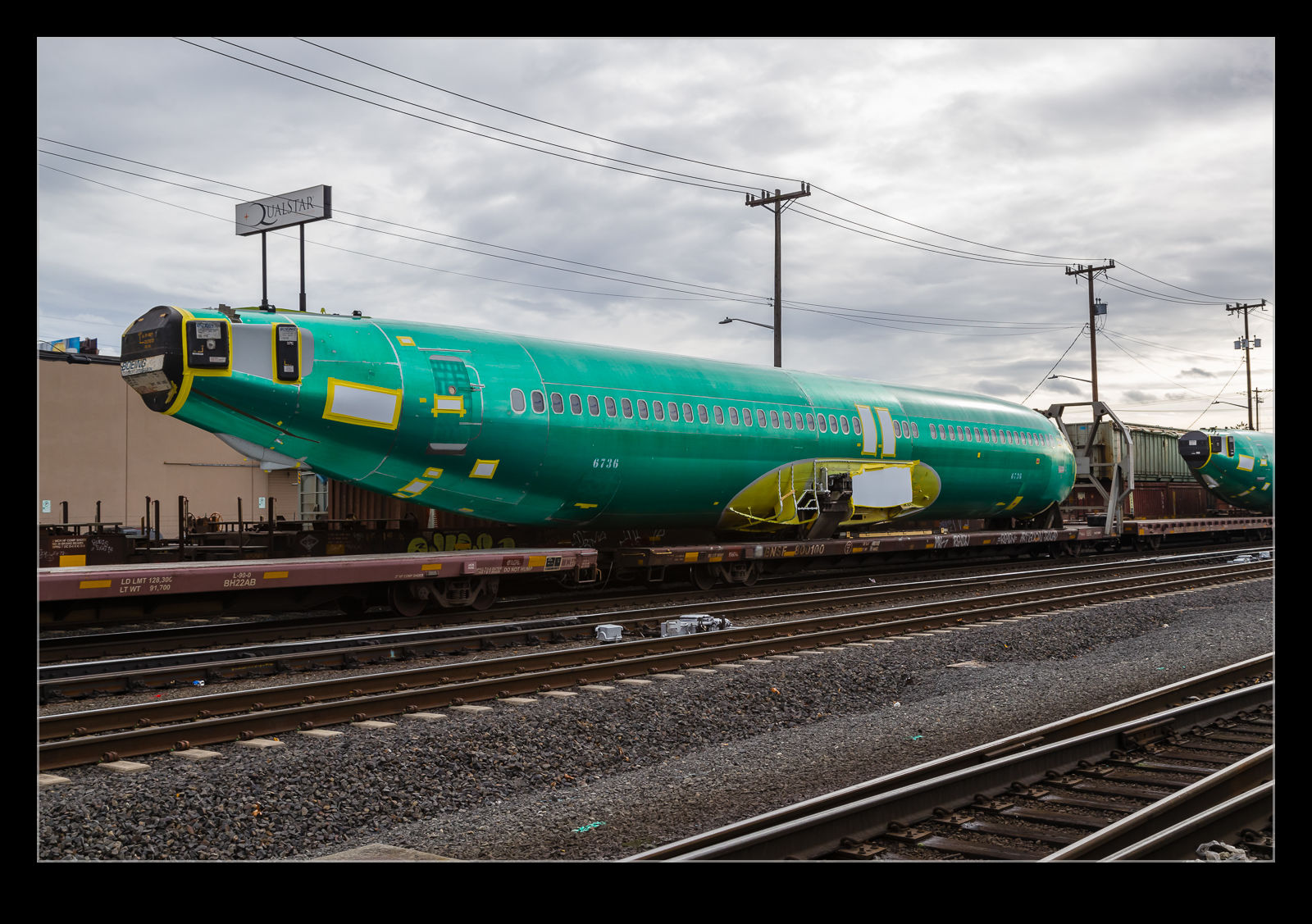 At various times I have seen the fuselages for new Boeing 737s heading by on the trains through Seattle. Usually I am a distance away from them and I get a shot that is a bit hazy and less than distinct. Recently I was working in a yard alongside the main tracks as some equipment was being loaded. I had my camera to hand to record the loading process as a train came by behind us. Initially I figured it was just another freight train so didn’t pay attention. Then, I caught the color of the fuselages out of the corner of my eye and realized a couple of new jets were onboard. Before it got too much further, I was able to grab a couple of shots.
At various times I have seen the fuselages for new Boeing 737s heading by on the trains through Seattle. Usually I am a distance away from them and I get a shot that is a bit hazy and less than distinct. Recently I was working in a yard alongside the main tracks as some equipment was being loaded. I had my camera to hand to record the loading process as a train came by behind us. Initially I figured it was just another freight train so didn’t pay attention. Then, I caught the color of the fuselages out of the corner of my eye and realized a couple of new jets were onboard. Before it got too much further, I was able to grab a couple of shots.
My Approach to Shooting and Processing on Crappy Weather Days
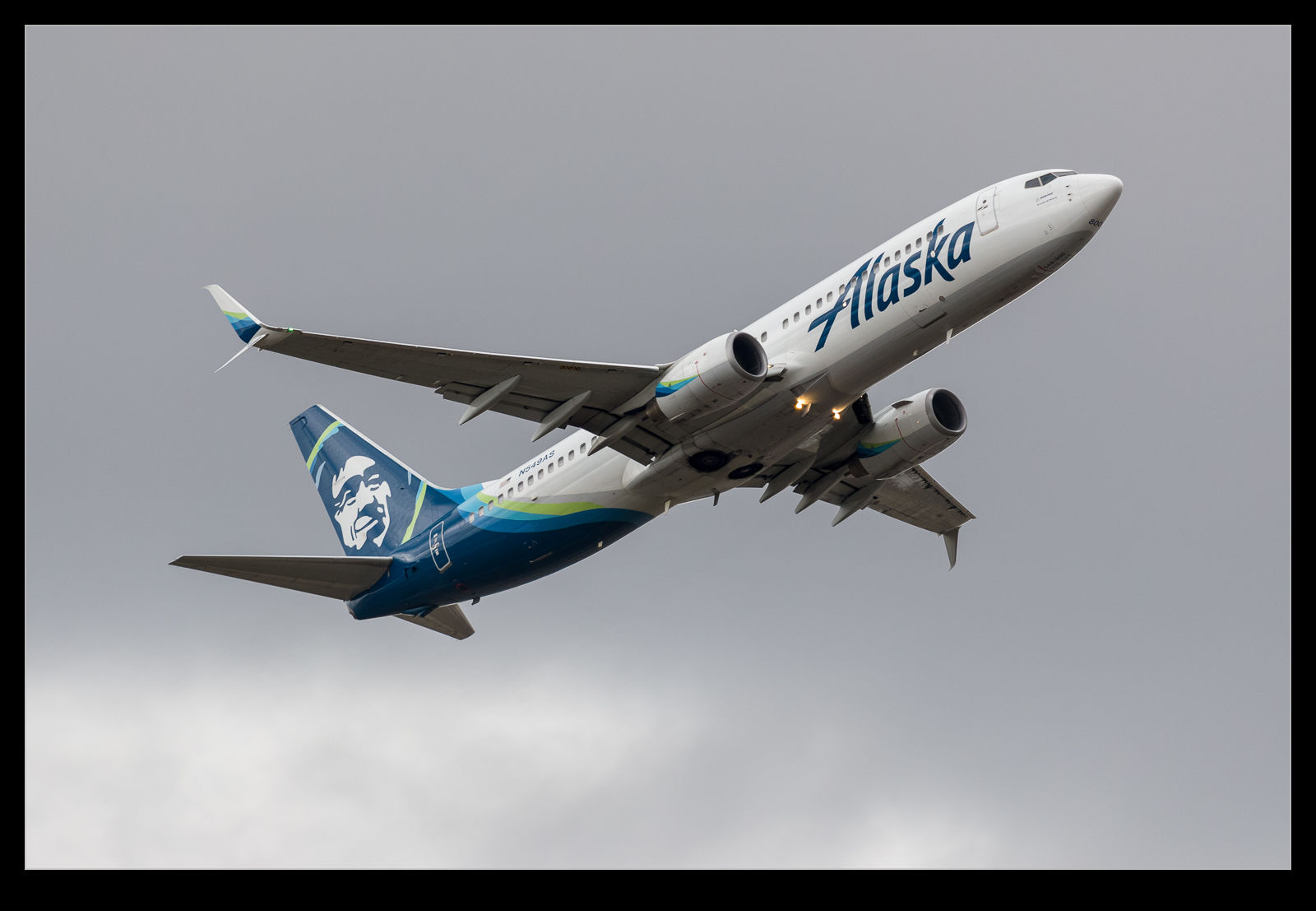
This is the finished image. This is pretty much what it looked like to the naked eye (through the viewfinder) when I took the shot given how dark the sky was.
A rare arrival was due on a day that was not good from a weather perspective. It was dull and rainy and so not what you would hope for. Conditions like this mean I try to exploit some of the features of the camera and the processing options available. First, how to set up the camera? With the light being bad and variable, I went to a pretty high ISO level. I shot in aperture priority mode and added a lot of exposure compensation.
In my experience, the metering is pretty good when shooting against the sky in clear weather but, when there is a lot of cloud, the camera tends to treat the clouds as too bright and it underexposes the subject too much. I use a lot of exposure compensation in this case with a setting of +2.0 being used on this day. The reason I do this is that, aside from the exposure question mark, there is a lot more information available in the lighter end of the exposure curve. Shooting in RAW gives you options.

This is how the camera recorded the image. This is the in camera JPEG that I extracted from the RAW file using Instant Raw From JPEG.
If you were to look at the aircraft at the time, you would see a dark and menacing sky but you would see plenty of detail on the plane. The camera does not see that for the original shot. The aircraft would be very dark. When processing, this dark area would give you something to work with but the variation in data would be more limited. Shoot overexposed and you get more to work with.
This approach will only work well if you are shooting RAW. If you are using JPEG, too much of the usable data will be discarded during the processing in the camera. To show you what I mean, here are two images. These are both from the same shot. One is the RAW file as it showed up when imported in to Lightroom and the other is the embedded JPEG that you can extract from the RAW file and which can be seen when the file is first imported before the rendering is undertaken. As you can see, the JPEG is over exposed but the RAW rendering seems even more so.
There is way more data in the RAW file though. Immediately, as I bring the exposure slider back down, the clouds go from being white to quite dark – just as they appeared on the day. Meanwhile, the fuselage of the aircraft has a lot of the data intact and maintains a lot of the brightness that you could see at the time. Very little needs to be done with the blacks and they are almost in the right spot by the time the exposure is good for the clouds. The fuselage might be a bit too dark though. A small tweak of the blacks and a little boost in the shadows to compensate for too much darkening with the exposure slider and suddenly the shot is looking a lot more like it did when I saw it develop.

My RAW processing baseline always results in a slightly more overexposed shot the embedded JPEG includes. When you first open the image, the embedded image you see in the previous shot initially shows up and then it renders the RAW file. This was the initial RAW rendering prior to any adjustments.
One advantage of shooting on such a crummy day is that the sky is a giant softbox – in this case a very soft one! The result is that the light is a lot more even than on a sunny day. The darker look can actually make the colors look a bit more intense than if they were losing out to the whites when the sun is right on them. While there was only one plane I was specifically there for, playing around with these other shots and working on the technique was a nice extra benefit.
AirEuropa to the Sun
 This example is not going to get me to the sun from Seattle. It will head to Europe before it starts transporting passengers. I saw it during test flying activities as it flew approaches to Paine Field. The sun was out but the skies were stormy so it made quite a dramatic sight as it bashed the pattern at Everett.
This example is not going to get me to the sun from Seattle. It will head to Europe before it starts transporting passengers. I saw it during test flying activities as it flew approaches to Paine Field. The sun was out but the skies were stormy so it made quite a dramatic sight as it bashed the pattern at Everett.
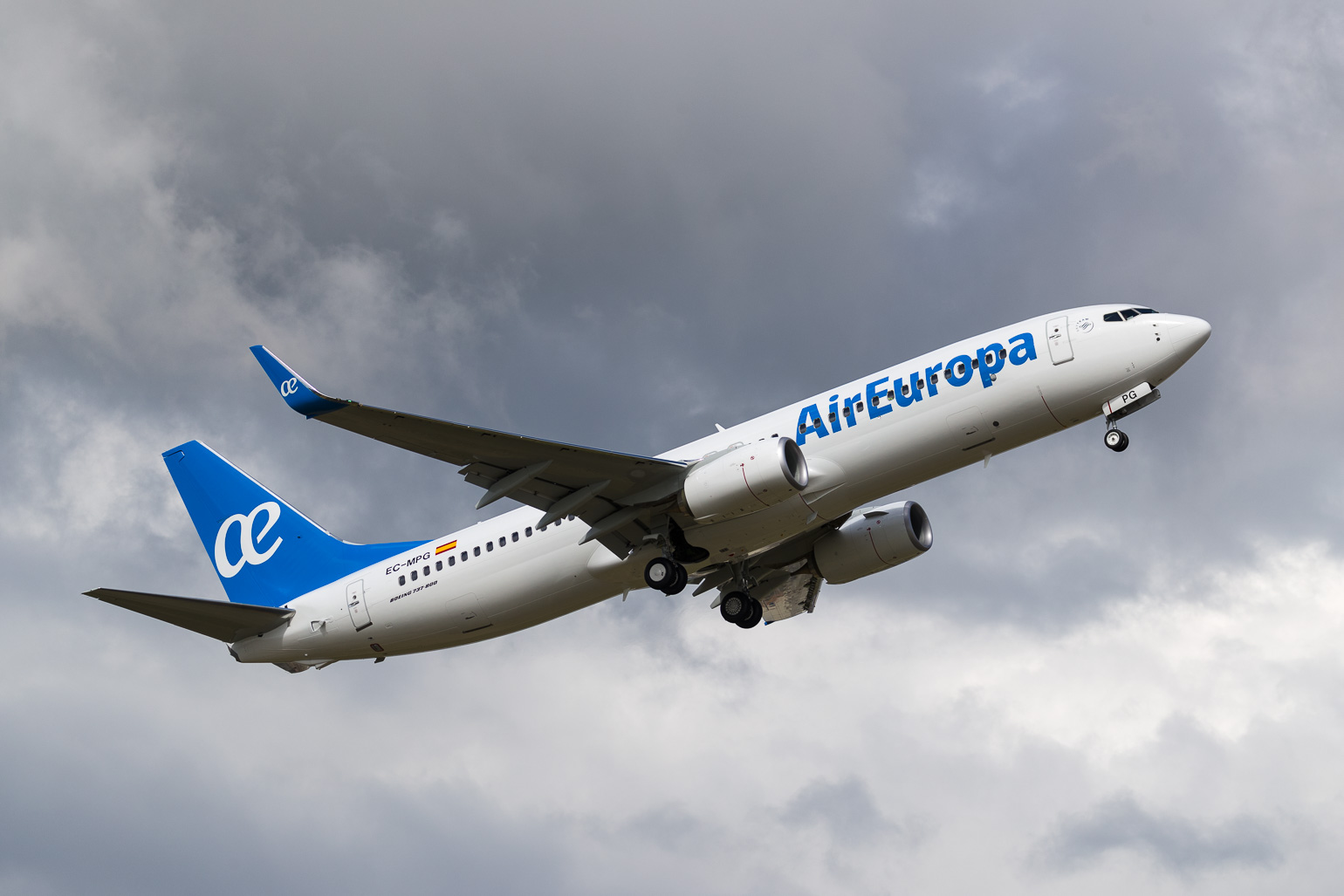 They even were kind enough to fly a missed approach the first time to get a different view of the jet. Then it was around the pattern and back in for a second approach, this time landing. The dark sky background was only in the direction of the approach so the roll out shots were far less dramatic.
They even were kind enough to fly a missed approach the first time to get a different view of the jet. Then it was around the pattern and back in for a second approach, this time landing. The dark sky background was only in the direction of the approach so the roll out shots were far less dramatic.
BBJ at Medford
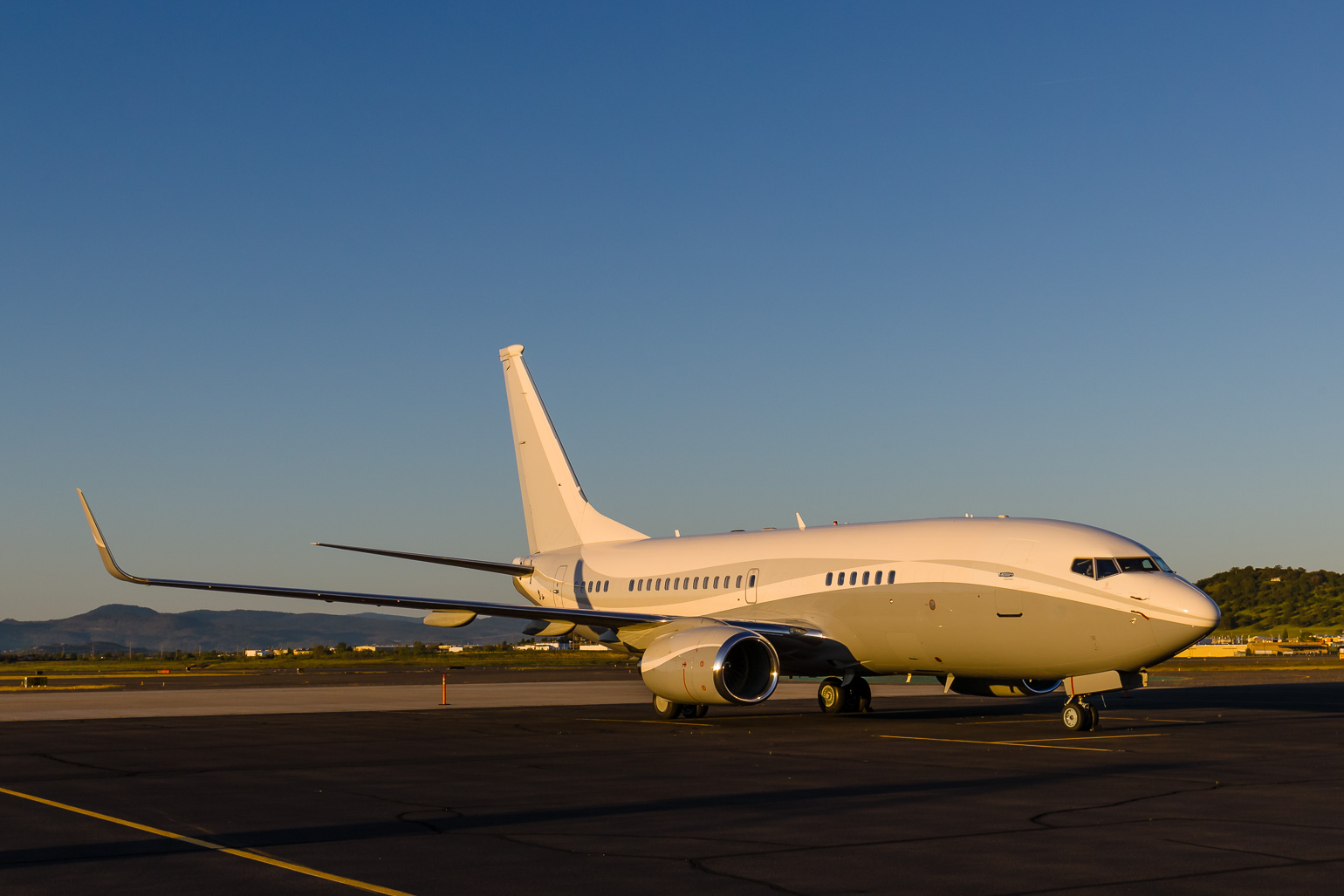 Directly opposite our hotel during our overnight stop in Medford Oregon was a Boeing BBJ. There was no way I wasn’t going to try and get a shot of it despite the fence. The initial shots were when we first arrived because I didn’t know what the timing of the rest of the day would be. However, after dinner, the light was getting so much better so I wandered back out to have another go. No idea whether it is based there or whether someone was just visiting. We left before it moved.
Directly opposite our hotel during our overnight stop in Medford Oregon was a Boeing BBJ. There was no way I wasn’t going to try and get a shot of it despite the fence. The initial shots were when we first arrived because I didn’t know what the timing of the rest of the day would be. However, after dinner, the light was getting so much better so I wandered back out to have another go. No idea whether it is based there or whether someone was just visiting. We left before it moved.
100th Anniversary Boeing by Alaska
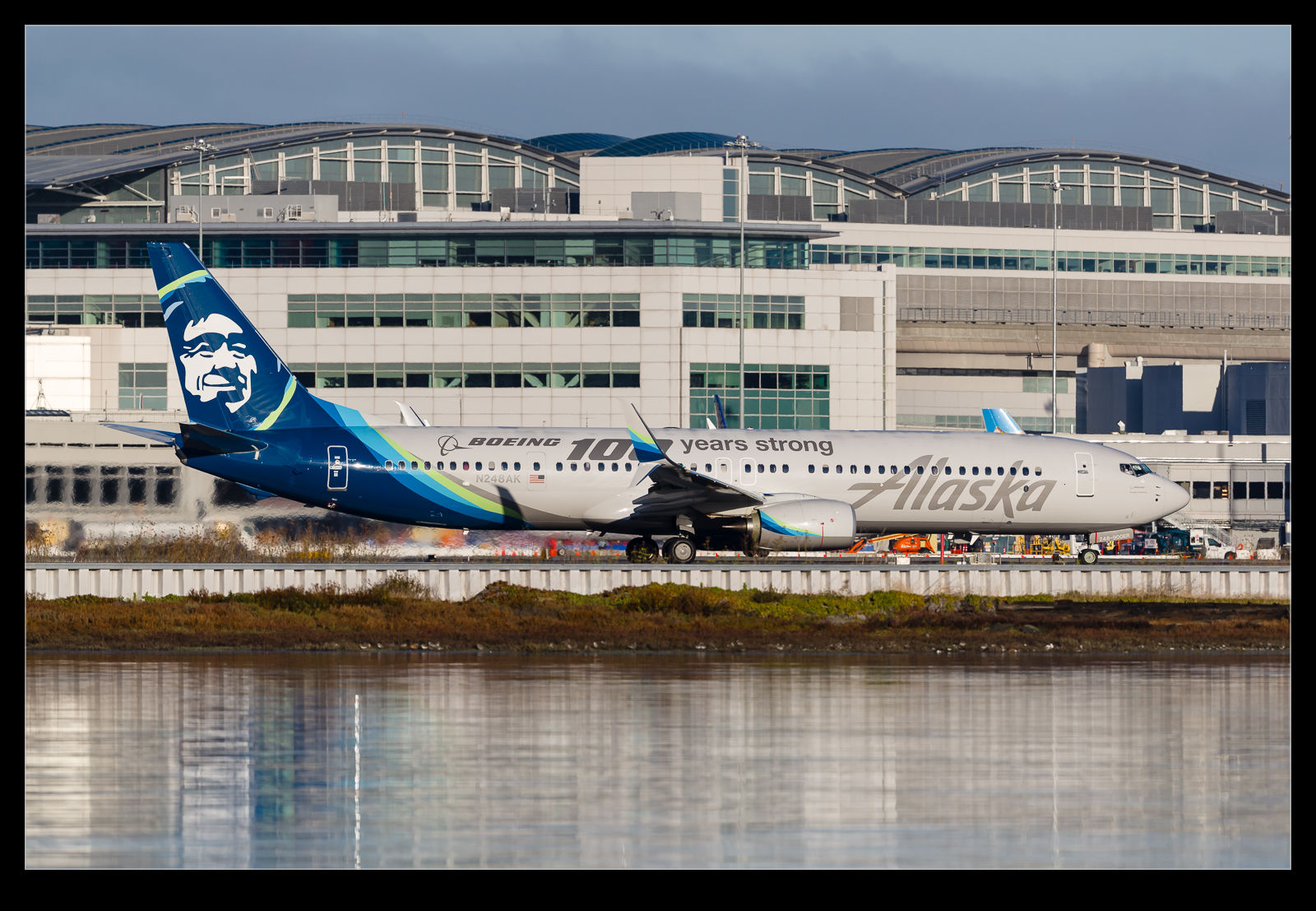 Alaska Airlines makes a big deal about being an “All Boeing” airline (which I assume does not count the Horizon Q400s and the Skywest Embraers). With Boeing celebrating their 100th anniversary, Alaska put some special markings on one of their jets. I was wondering where this jet was operating so I could shoot it but I lost track of it for a while. Then, imagine my surprise when it happened to be at SFO when I was there for something else. It lined up for departure early in the day when the light was best. Thanks Alaska!
Alaska Airlines makes a big deal about being an “All Boeing” airline (which I assume does not count the Horizon Q400s and the Skywest Embraers). With Boeing celebrating their 100th anniversary, Alaska put some special markings on one of their jets. I was wondering where this jet was operating so I could shoot it but I lost track of it for a while. Then, imagine my surprise when it happened to be at SFO when I was there for something else. It lined up for departure early in the day when the light was best. Thanks Alaska!
Southwest Evasive Maneuvers
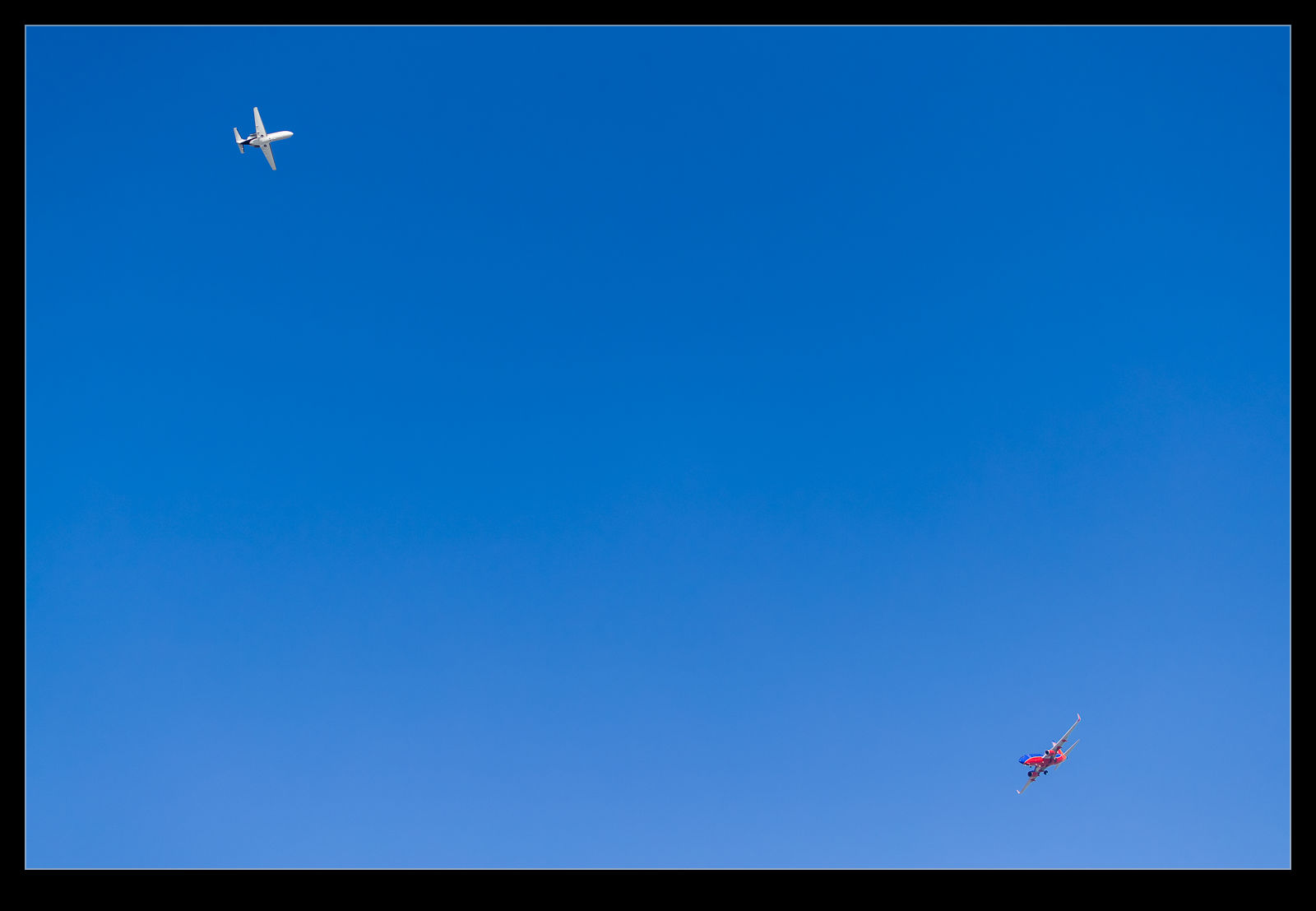 This was not an aircraft photography trip. I was taking a walk along the shore at Hayward Regional Park. It is a place with lots of wildlife and views across the bay. It is also near the approach to Oakland so I did have the chance to take aircraft pictures if I wanted. That wasn’t the goal though. It didn’t stay that way though. The approach to Oakland involves flying right by Hayward Airport. Hayward has a lot of general aviation traffic. The spam cans are intermixed with some corporate jets.
This was not an aircraft photography trip. I was taking a walk along the shore at Hayward Regional Park. It is a place with lots of wildlife and views across the bay. It is also near the approach to Oakland so I did have the chance to take aircraft pictures if I wanted. That wasn’t the goal though. It didn’t stay that way though. The approach to Oakland involves flying right by Hayward Airport. Hayward has a lot of general aviation traffic. The spam cans are intermixed with some corporate jets.
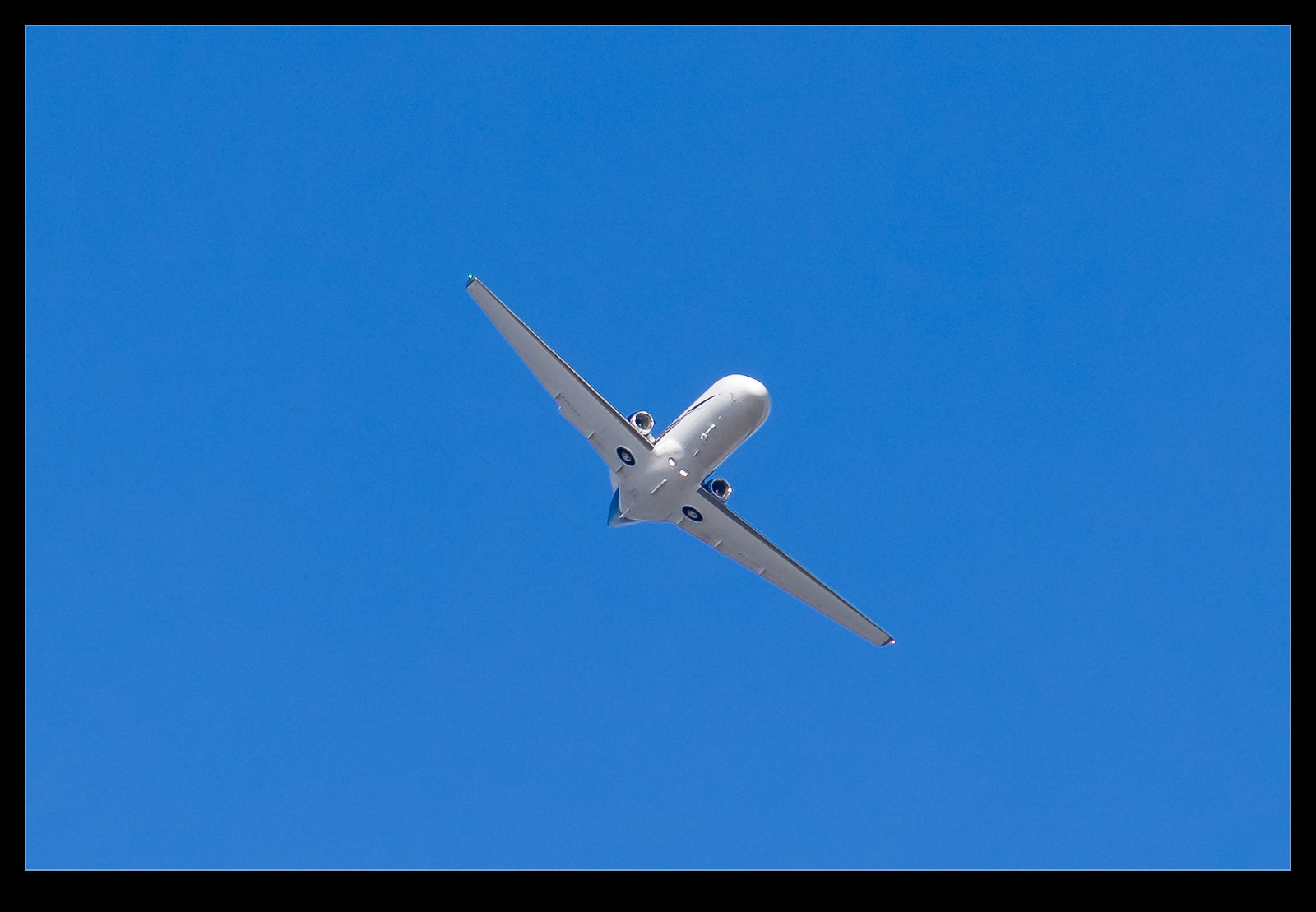 What caught my eye was the incoming Southwest 737 and a departing Cessna CJ M2. The CJ took off and entered a climbing left turn. This put it into the path of the Southwest 737. I don’t know who was at fault in this. Was the Southwest jet too close, did the CJ pilot break his cleared departure profile or should Hayward tower never let him go? I don’t know. Whatever the reason, they were heading towards each other.
What caught my eye was the incoming Southwest 737 and a departing Cessna CJ M2. The CJ took off and entered a climbing left turn. This put it into the path of the Southwest 737. I don’t know who was at fault in this. Was the Southwest jet too close, did the CJ pilot break his cleared departure profile or should Hayward tower never let him go? I don’t know. Whatever the reason, they were heading towards each other.
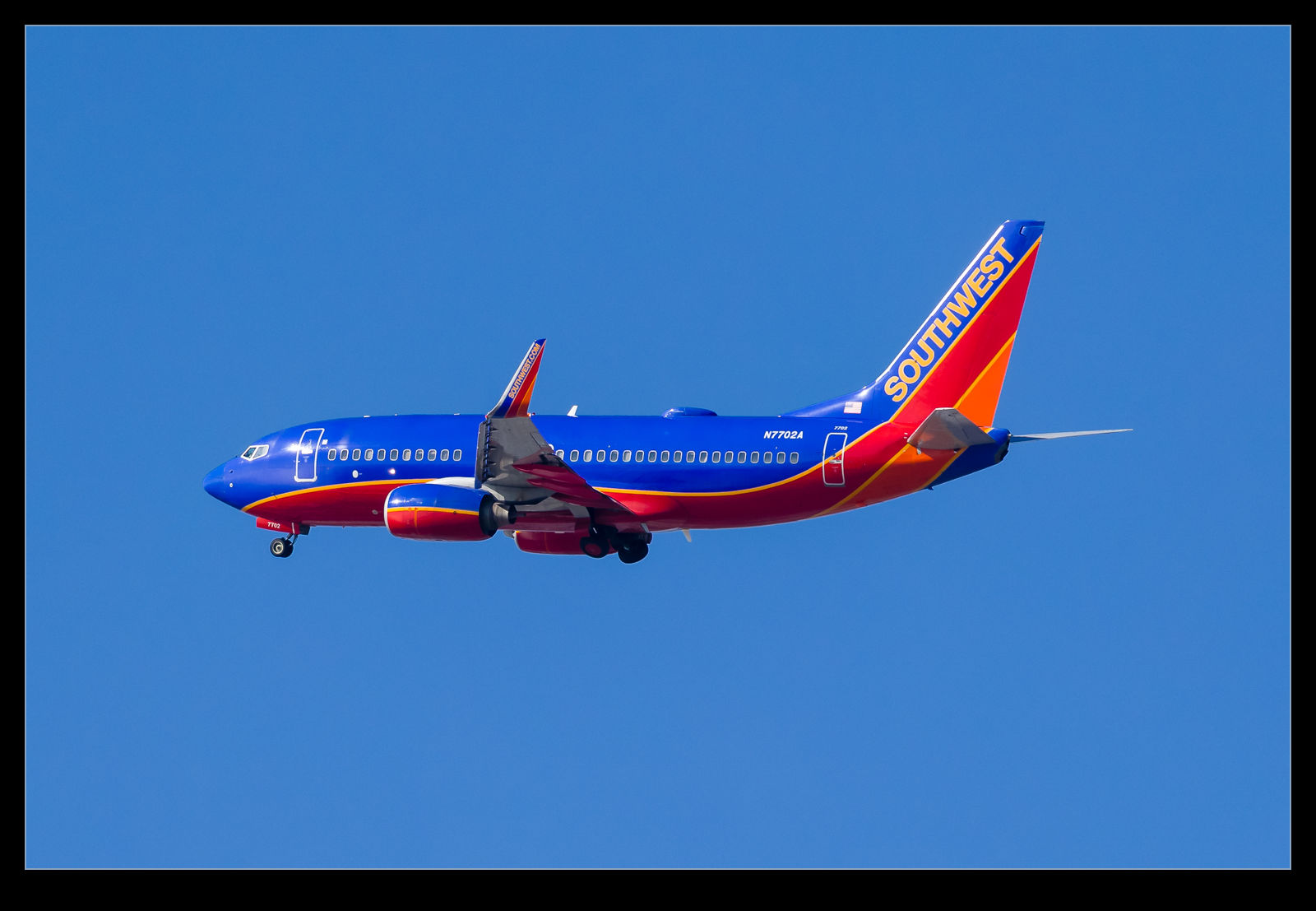 I also don’t know whether the Southwest crew saw the CJ first or if the TCAS gave them a resolution notice. Whatever happened, they took some pretty dramatic avoiding action. I imagine it felt pretty interesting from inside the cabin. They gained good separation and everything was fine. At first I thought they were going to try and get reestablished on the approach but cooler heads prevailed and they cleaned up the jet and went around. After some time to let the heart rate fall, they appeared back on the approach for a more conventional approach. All ended well. I wonder how the conversations went after landing.
I also don’t know whether the Southwest crew saw the CJ first or if the TCAS gave them a resolution notice. Whatever happened, they took some pretty dramatic avoiding action. I imagine it felt pretty interesting from inside the cabin. They gained good separation and everything was fine. At first I thought they were going to try and get reestablished on the approach but cooler heads prevailed and they cleaned up the jet and went around. After some time to let the heart rate fall, they appeared back on the approach for a more conventional approach. All ended well. I wonder how the conversations went after landing.
Trying to do Something Different with a Southwest 737
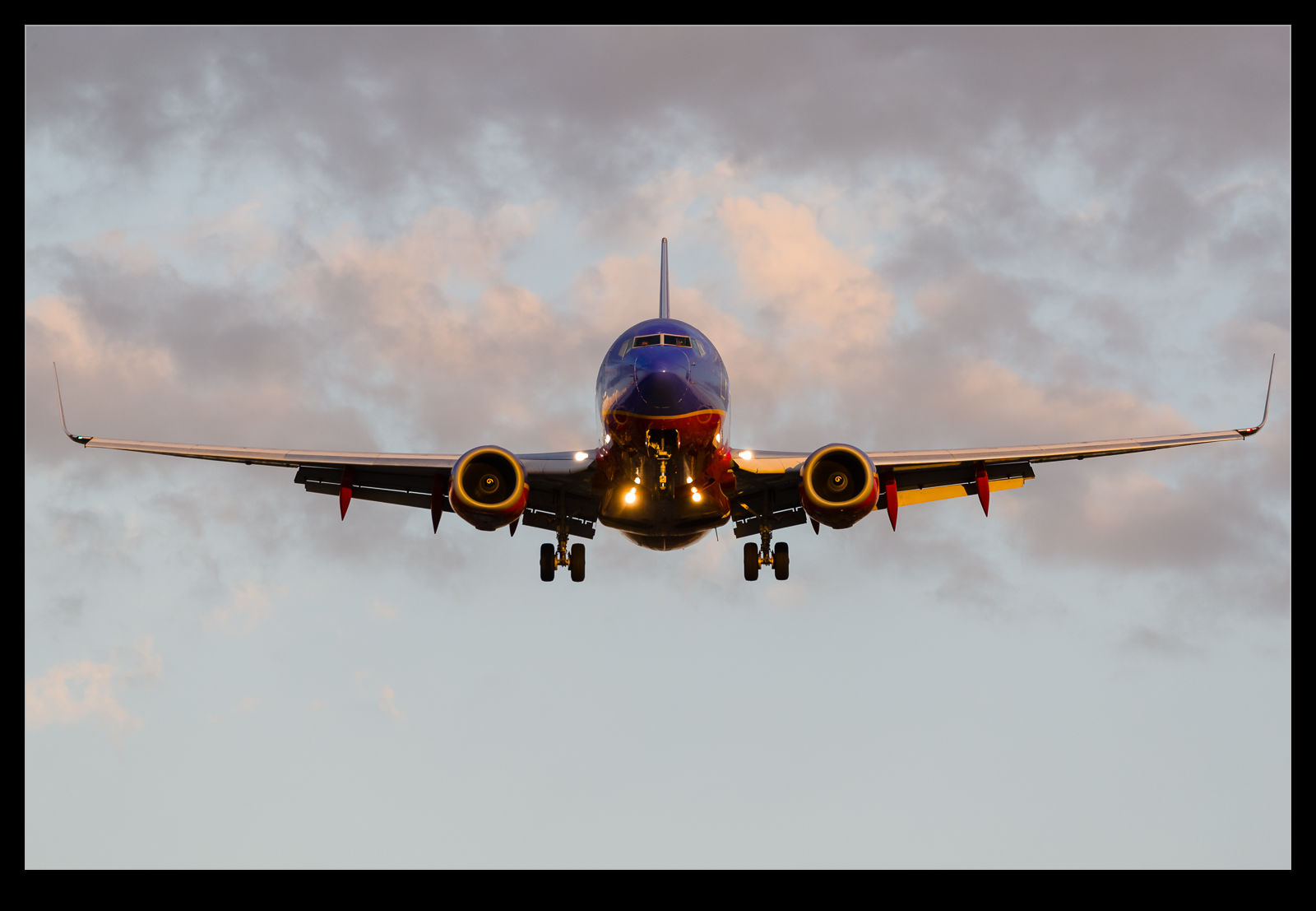 If you want to go with a rather easily achieved photo, a shot of a Southwest 737 would seem to be about as common as they get in the US. I was staying in a hotel near Midway recently and, after dinner, I decided to see if I could get something a little different to my normal shots of a plane I spend a lot of time sitting inside! I wasn’t hampered by some rather helpful weather conditions.
If you want to go with a rather easily achieved photo, a shot of a Southwest 737 would seem to be about as common as they get in the US. I was staying in a hotel near Midway recently and, after dinner, I decided to see if I could get something a little different to my normal shots of a plane I spend a lot of time sitting inside! I wasn’t hampered by some rather helpful weather conditions.
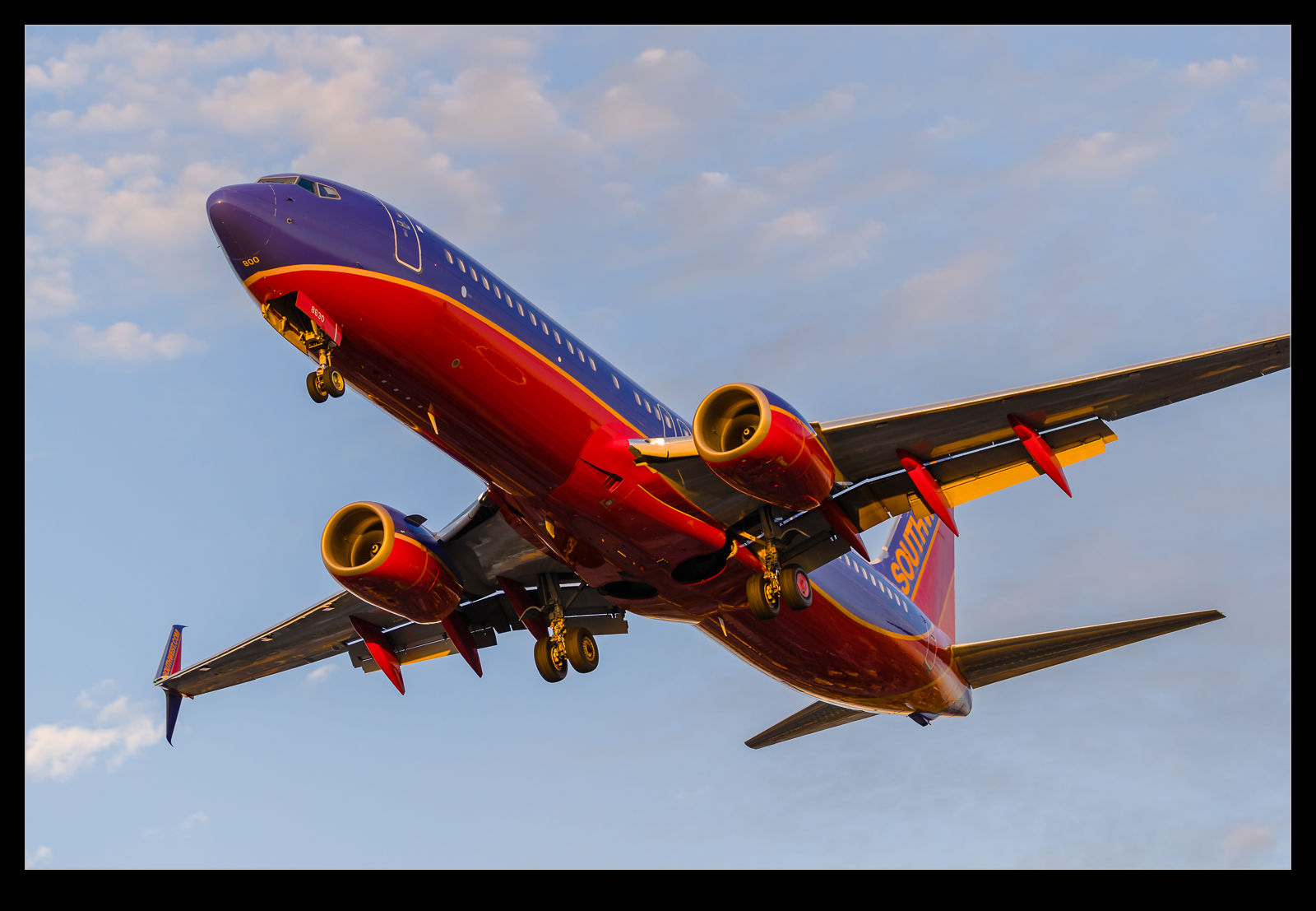 I was close to the approach path so I wandered off to find what line worked best. My best results came from two spots. One was directly on the flightpath. The other was slightly offset to one side. At this location, the planes are just short of the field so are pretty low. I include a couple of shots that show the rooflines of some of the houses to give you an idea of the surroundings. The shots from under the nose are interesting but there is only so much you get from that angle. I was pleased with a few of the, but I did not spend a lot of time in this spot.
I was close to the approach path so I wandered off to find what line worked best. My best results came from two spots. One was directly on the flightpath. The other was slightly offset to one side. At this location, the planes are just short of the field so are pretty low. I include a couple of shots that show the rooflines of some of the houses to give you an idea of the surroundings. The shots from under the nose are interesting but there is only so much you get from that angle. I was pleased with a few of the, but I did not spend a lot of time in this spot.
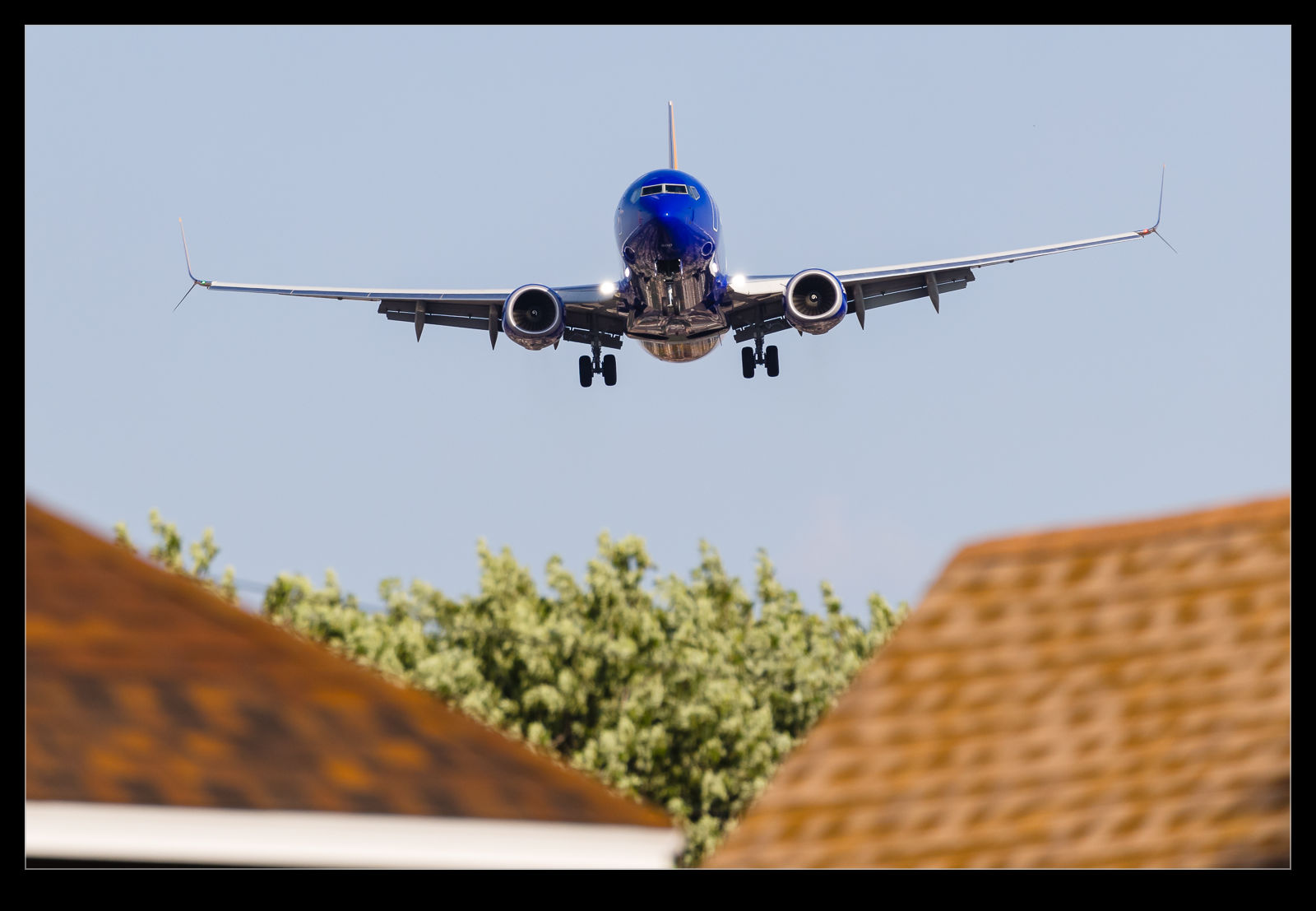 Being offset provided a more interesting angle. I only had one lens with me so I was a little limited in what I could try by having a longer focal length. Being full frame does now give me a bit more width at the short end of the zoom though. Therefore, I could get some shots from almost underneath that provide a slightly more dynamic angle.
Being offset provided a more interesting angle. I only had one lens with me so I was a little limited in what I could try by having a longer focal length. Being full frame does now give me a bit more width at the short end of the zoom though. Therefore, I could get some shots from almost underneath that provide a slightly more dynamic angle.
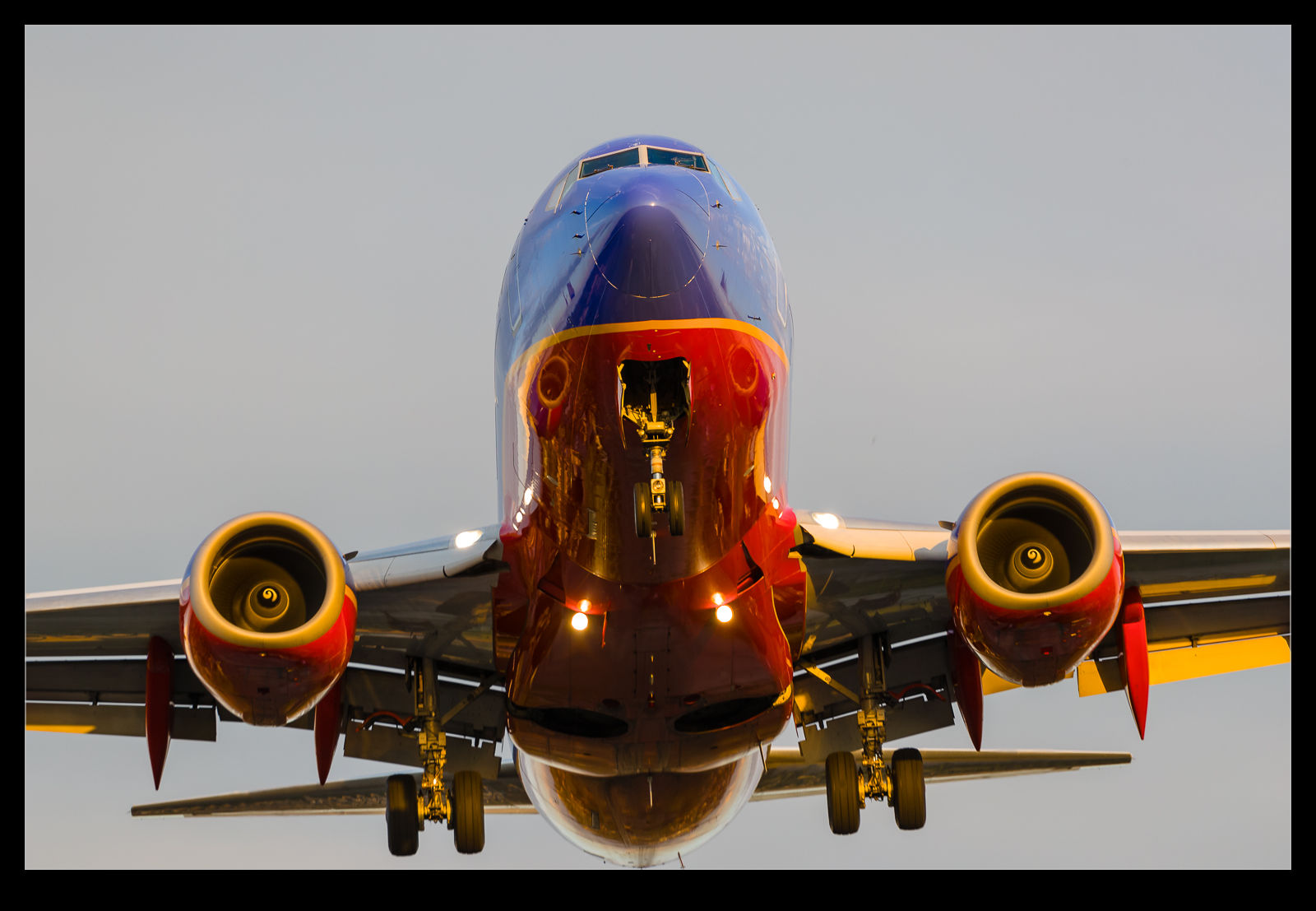 Since it was evening, the light was getting better and better. What certainly helped was that there was a hint of storm activity in the distance and some clouds were bubbling up. They made for a far more interesting backdrop than the empty sky. Overall, this was a pretty satisfying evening. I did get some other arrivals that while I was there and I will possibly give them their own post at some time.
Since it was evening, the light was getting better and better. What certainly helped was that there was a hint of storm activity in the distance and some clouds were bubbling up. They made for a far more interesting backdrop than the empty sky. Overall, this was a pretty satisfying evening. I did get some other arrivals that while I was there and I will possibly give them their own post at some time.
